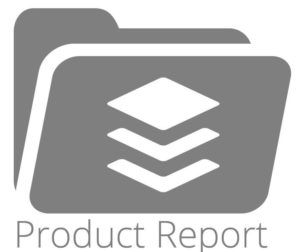Product Report July 2016
We’re excited for our first product report! Every month, we plan to update you on the latest goings-on within the Buffer product. Currently, we have three “tribes” underneath the Buffer product umbrella—Buffer, Buffer for Business and Growth.
We’ll walk you through the product overall and then share some some key metrics and updates from each of those tribes!
Key numbers to note:
- 155,386 weekly active users (across Individual and Awesome plans)
- B4B trial starts: 8,800
- 4308 weekly active B4B Users (-2.7% from end of June)
- 23.7k new Instagram profiles connected within 1 week of launch
Integrating mobile into everything we do
Until recently, Buffer had four primary product tribes:
- Buffer
- Buffer for Business (B4B)
- Growth
- Mobile
We’re making the move to now include mobile within both Buffer and Buffer for Business, based on respective features and products.
Within the mobile tribe, we were often solving the very same challenges as the rest of Buffer, but with our own validation, research and solutions. This sometimes led to solving the same challenge twice, duplicating research, or a lack of cohesiveness between features or roadmaps on Buffer web and Buffer mobile.
By incorporating mobile into the mainstream Buffer product flow, we’ll be able to accelerate our development of validated features on mobile, knowing we’re building the right thing. Often, this will mean building solutions in parallel with Buffer web, allowing us to release features across all platforms simultaneously.
A shining example of how well this worked was building Instagram across web, Android and iOS at the same time. It was a such an incredible experience, we’ll be applying a ton of those learnings to new features as we move forward together!
It’s perfectly possible (and likely) we’ll still have mobile-first, mobile-only, and web-only features and products. Each challenge we validate has a set of possible solutions, some of which will be best delivered on one, some or all of our platforms. Which platform is best will be decided by the research and data we gather to validate any potential solutions.
Buffer Tribe
The Buffer Tribe is responsible for solving problems for our Individual users and Awesome customers. For some context, we are currently set up with five areas: Core Buffer; Content Library (in beta); Composer (where you create your posts); Instagram and Mobile (working across Buffer for Business and Buffer tribe).
The most exciting thing looking back on July was launching Instagram across web, iOS and Android and making it available to users on all plans! It was a highly requested feature from our customers. We learned a ton about how to properly run a beta group and how to make the experience helpful, exciting and engaging. It really is amazing that we have customers who help build our products alongside us and help us make sure we’re building the right solution!
In addition to Instagram, we made progress on our two other biggest beta projects: a new Buffer Composer experience and the beta Content Library.
New Composer: Solving the challenge of niched social networks
With the new Buffer Composer, we’re trying to solve the problem of increasingly niched social networks. Facebook is no longer the one-stop shop for all audiences everywhere, and each additional network brings its own audience, interests, formats and content—even for the same exact brand. This upgrade aims to reconcile the new reality of social and the Buffer product by letting our customers customize their content on a per-network basis rather than in a one size fits all manner.
In July we made lots of progress, introducing new improvements to the composer experience to our beta group using the extension and ramping ourselves up for implementing a similarly improved experience in the web dashboard! More details and screenshots coming your way over the next few months. :)
Content Library: Giving top content a longer life
Overall at Buffer, we want to help our customers get their voice heard. We hope Content Library will help—it’s a way for users to be able to organize and repeat their best content across their social networks. Content Library helps deliver their message in a long-tail, over time to make sure it drives value for their whole audience. We continue to be really excited about the feature internally as we hear more and more from our customers that it really solves some painful problems for so many.
Through most of early Q2, we built out the basic features in an MVP way so we could test with customers, get feedback and see if we were on the right track. After getting this feedback and making changes based on it, we spent time in July refactoring parts of the code behind Content Library to take it from a MVP state closer to something that felt ready to deploy for all! We’ll be working more through this progress over August.
Buffer for Business
Update by Tom R
More July metrics:
- $424,121 in B4B Monthly Recurring Revenue (+3.3% from 28 days prior)
- 2,813 new Team Members added (+10.9% from June)
‘Team owners’ to become ‘organization admins’
We’re very excited to be in the final QA stages of our brand new Organization Admin tool. Rolling out in early August, the new admin is a completely redesigned way for team owners to manage their social accounts, team members and permissions alike. It also introduces a highly requested feature: Team owners—now “Organization Admins”—will also be able to grant admin permissions to other team members, allowing them to delegate much of the administrative work, such as inviting new team members or adding social accounts, among the team.
In progress: Native Facebook Page mentions
We’ve also started work on integrating native Facebook Page mentions, which will allow Buffer users with Facebook Page accounts to tag other Facebook Pages when they post through Buffer. These mentions will show up as native, linked mentions on Facebook when the post goes out! Our goal is to have this feature out by August.
Growth
Update by Maxime
Key growth metrics
- B4B trial converted users: 333 (June was 351)
- Second-best month since we increased business pricing in March
- B4B trial ended: 9,900 users ended their trial (6,600 ended their trial in May).
- We had a pretty high number in July because of an experiment we launched in June called “the full option trial” – we on-boarded some of our new users straight to a Business trial rather than them needing to trigger it themselves.
- B4B trial starts: 8,800 (9,700 trials start in June)
Finding the right fit with trialists
We saw fewer trial starts in July, which is actually great!
A key challenge we’ve had is that a growing number of new B4B trialists didn’t require all B4B features—so it simply wasn’t the best fit for them or their needs.
This mismatch continuously pushed our conversion rate down whilst also making it harder for the customer success team to focus on the B4B prospects most in need of their help.
We wanted to improve matching potential customers with the right plans, so we ended the full option trial experiment and cleaned up some upgrade paths for more qualified leads. The downturn in trial starts shows that we’re getting closer to better qualifying leads for B4B trials.
As part of our mission to help customers experience Buffer’s value, we are now excited to be working on ways to ensure a better plan fit for all of our customers.
New tool! Hotjar now aiding experiments
We implemented a new research tool called Hotjar that helps us to learn from customers by securely recording their sessions.
We discovered new customers on the B4B trial were being immediately bombarded by modals and calls-to-action. We decided to clean that experience up. We also found several old experiments that had to be removed. It felt important to make a call on ending these experiments as part of our push to clean up the sign-up experience.
Awesome “Awesome” Results
We fixed a broken call-to-action button on the pricing page and added a trial start to the Awesome landing page. Awesome trial starts in July increased by 30% partly due to this and also thanks to the Instagram launch.
A future growth hacker!
In addition to all the above, Steve’s son (Baby Leo) is joining our team sync regularly and is already a perfect growth hacker ? ? ?. (You can read more about Steve’s fatherhood experience—and see photos—right here!)
Over to you
Is there anything you’d love to learn more about? Anything we could share more of? We’d love to hear from you in the comments!
Check out more of our July 2016 monthly reports:
Try Buffer for free
190,000+ creators, small businesses, and marketers use Buffer to grow their audiences every month.



